Last-Minute NYC Holiday Gift Guide 🎁
We’ve created a holiday gift guide with presents for the intrepid New Yorker that should arrive just in time—


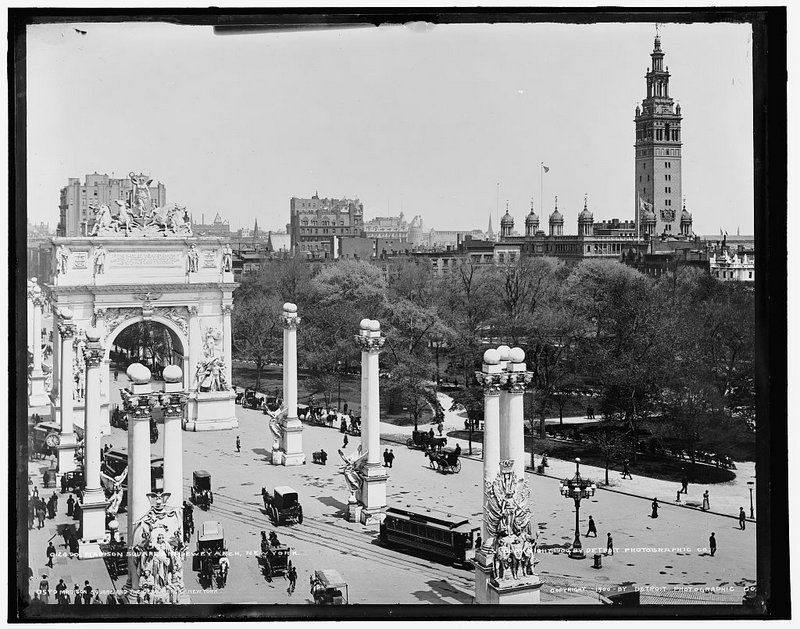 The Arch of Victory, once spanning Broadway at 25th Street. Image via: U.S. Library of Congress
The Arch of Victory, once spanning Broadway at 25th Street. Image via: U.S. Library of Congress
This article is by Kevin C. Fitzpatrick, the author of World War I New York: A Guide to the City’s Enduring Ties to the Great War (Globe Pequot Press), a guidebook to more than 150 locations in the five boroughs with links to “the War to End All Wars.”
With the centennial of American entrance into World War I on April 6, 2017, it’s a good time to recall the many traces of the war that remain in New York today. The city served as a vital embarkation and debarkation point, and it’s role as a supply base and financial center were critical to the war effort. One in ten Doughboys were from New York, and thousands of volunteers, men and women, were from the region.
Today there are reminders of the Great War all around us:
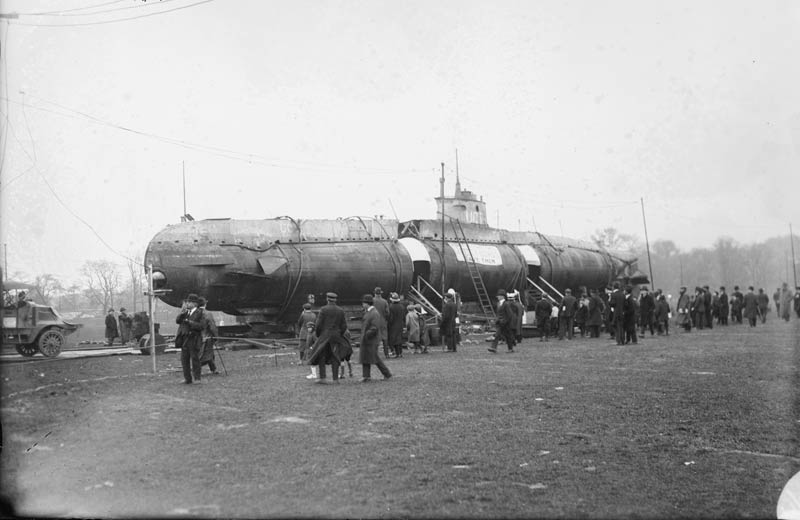
Captured German submarine placed in Central Park for war bond fundraising 1917. Image via: U.S. Library of Congress
A variety of uses were found for Central Park during the war years. Before America declared war on Germany, recruits and soldiers drilled on its fields. Central Park was also perfect for publicity and fundraising stunts.
The Second Liberty Loan parade, held on October 25, 1917, featured a German piece of war: a real U-boat. A Royal Navy destroyer near the Heligoland archipelago in the North Sea captured the UC-5, a minelayer submarine. It was dismantled and cut into three massive pieces and shipped to New York. Teams of forty horses pulled each piece of the U-boat across the city and to the Sheep Meadow, where it was renamed U-Buy-a-Bond. It was open to the public to tour by purchasing bonds.
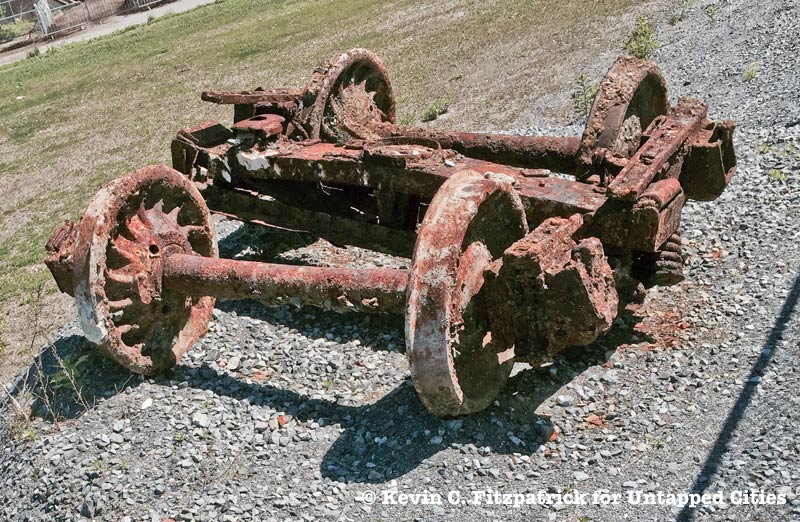
All that’s left of the Governors Island Railroad
When war was declared, Governors Island was designated as a supply base. More than seventy new buildings were constructed with floor areas that totaled 30 million square feet and provided storage for war material of every variety, from helmets to horseshoes. Every day of the war, the government moved $1 million (about $16 million today) worth of goods through the island.
To accomplish this herculean task, the Governors Island Railroad was launched. It had eight miles of track, three engines, boxcars, and an engine house, and it operated around the clock moving supplies from docks to warehouses. After the war, all of the structures and warehouses were razed. In 2012, during a construction project, boxcar wheels were uncovered. They sit next to the Urban Farm.
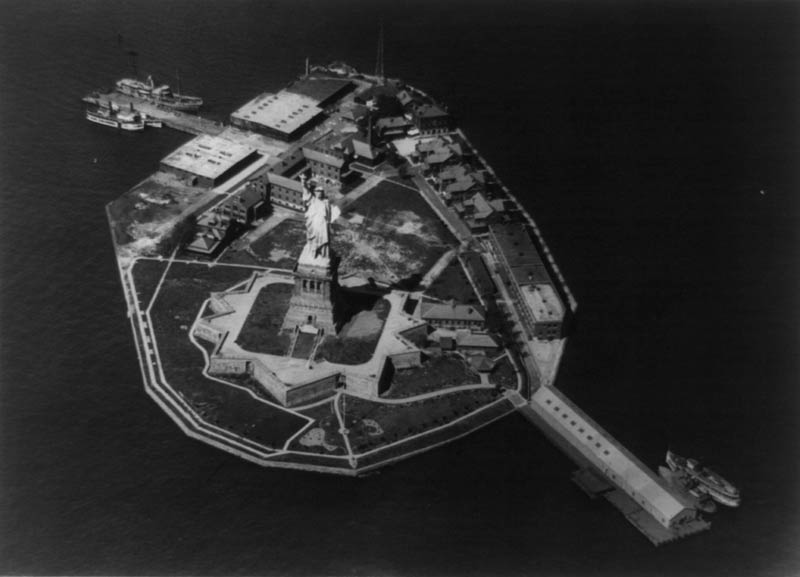
Liberty Island c. 1930; the Army buildings were demolished soon after. Image via: U.S. Library of Congress
Walking around the base of the Statue of Liberty today, it isn’t hard to imagine the military presence that once was on the island. The star shape fort around the base predates the statue by many generations and is a remnant of Fort Wood, built in 1807. It became one of the harbor forts to protect the city.
One company of Signal Corps troops was stationed at Fort Wood, and this was where local aviators were ordered to report for wartime service. During the war the post was an important part of the coastal defense and worked with other military bases in the region to protect the harbor. The Army decommissioned the post in 1937 and its barracks were demolished. A museum will open in the spot in 2019.
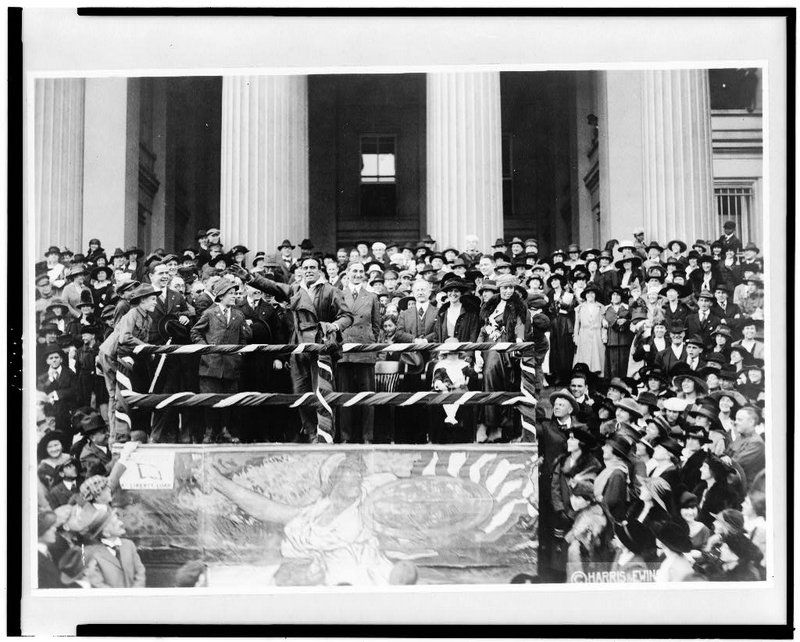
Douglas Fairbanks, 1918 Liberty Loan Drive. Image via: U.S. Library of Congress
The promise of seeing Charlie Chaplin and America’s most beloved screen couple, Douglas Fairbanks and Mary Pickford, drew tens of thousands to the steps of this landmark building in April 1918. As the Liberty Loan drive began, National Guard units from across the city marched through their neighborhoods to sell bonds. On April 8, a replica of the Liberty Bell in City Hall was rung ten times between noon and 2 p.m.—one ring for each thousand dollars raised in bond sales.
When the silent movie stars arrived on Wall Street, the crowd went crazy with delight. The crowd stretched from Trinity Church to William Street. The 1842 Sub-Treasury, today called Federal Hall National Memorial, occupies the site of where George Washington took the oath of office as the nation’s first president. It is at the juncture of Wall, Broad, and Nassau streets.
Get the book World War I New York: A Guide to the City’s Enduring Ties to the Great War
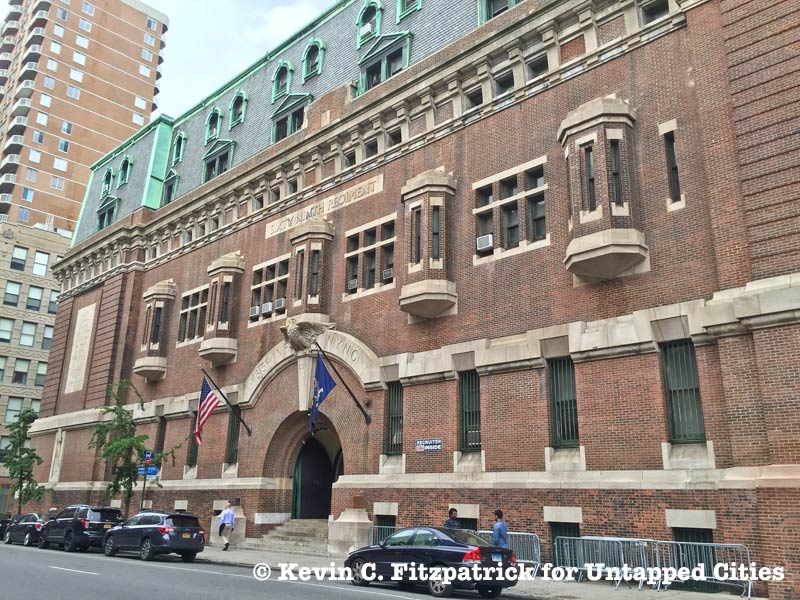
The 69th Regiment Armory is still used today for military functions
Completed in 1906, the landmark Beaux Arts style armory stands at 68 Lexington Avenue between East Twenty-Fifth and Twenty-Sixth streets. This is the home of the fabled “Fighting Sixty-Ninth” that earned glory in the Civil War as an Irish-American unit. In World War I, the Army converted the National Guard soldiers into the 165th Infantry Regiment. Its two most famous members were Father Francis Duffy, their chaplain, and Sergeant Joyce Kilmer, the poet.
The 165th were members of the Forty-Second Division, the Rainbows, which lost almost three thousand men, killed in action or dead from wounds. Almost twelve thousand more came home wounded. Today the armory is not a museum; it still serves a military function and has a members only hidden bar. Members have deployed to Afghanistan and Iraq from here.
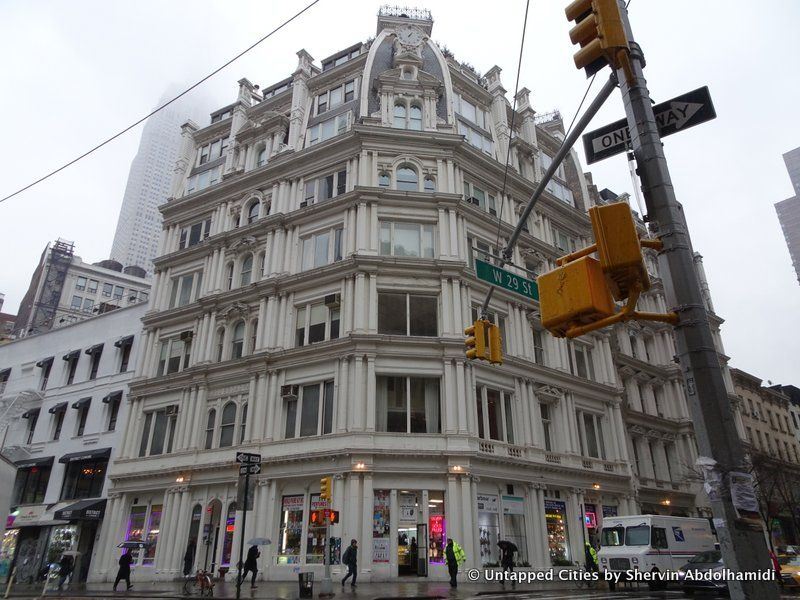
Gilsey House near Tin Pan Alley
Tin Pan Alley, a stretch of Twenty-Eighth Street between Fifth and Sixth avenues was where hundreds of patriotic songs were produced during the war. For the first half of the twentieth century, this was the location of the popular music industry. Musicians, songwriters, composers, and sheet music publishers flocked here. Soon after the industry took over Twenty-eighth Street, songwriters turned out pro-American songs by the boatload.
Among the forgotten tunes of yesteryear from the war: “Keep Your Head Down, Fritzie Boy,” “Yankee Girl, I’m Coming Back to You,” “Good-Bye Broadway, Hello France,” and “We’re Going to Hang the Kaiser Under the Linden Tree.” Post-war, the music industry moved uptown to 1619 Broadway, the Brill Building, and Tin Pan Alley moved with it.
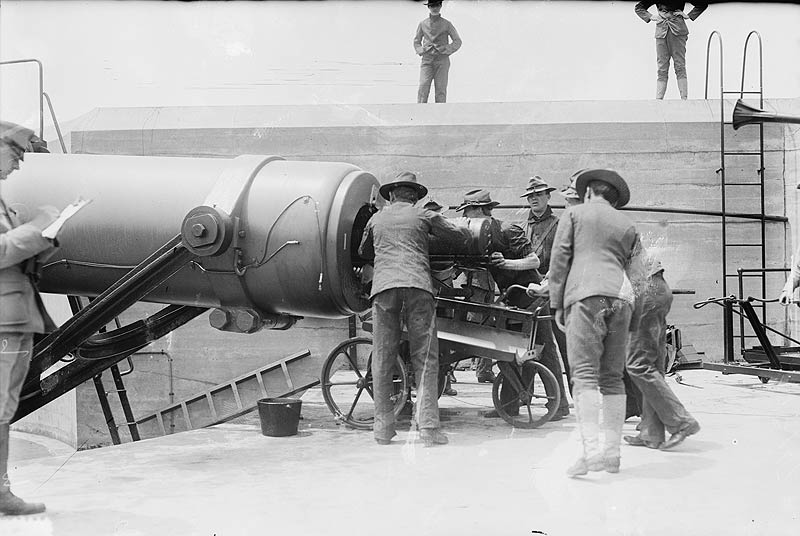
Fort Hamilton in Bay Ridge was ready, but never fired a shot in anger. Image via: U.S. Library of Congress
The only U.S. military post in Brooklyn has been here since 1831, when Fort Hamilton established its first garrison. The post was aligned with Fort Lafayette (which is where the Verrazano–Narrows Bridge is today) and Fort Columbus on Governors Island.
During World War I it was a central processing unit for soldiers. The Coast Artillery Corps manned Fort Hamilton’s batteries for an attack that never came. Among active-duty Army units, companies from the Twenty-Second Infantry Regiment were stationed here. They were used for guard duty, training, and supply. On August 3, 1917, the Twenty-Second Infantry was called upon to furnish three officers and 400 enlisted men for immediate duty overseas. Following the war, Fort Hamilton was used as a separation center.
Get the book World War I New York: A Guide to the City’s Enduring Ties to the Great War
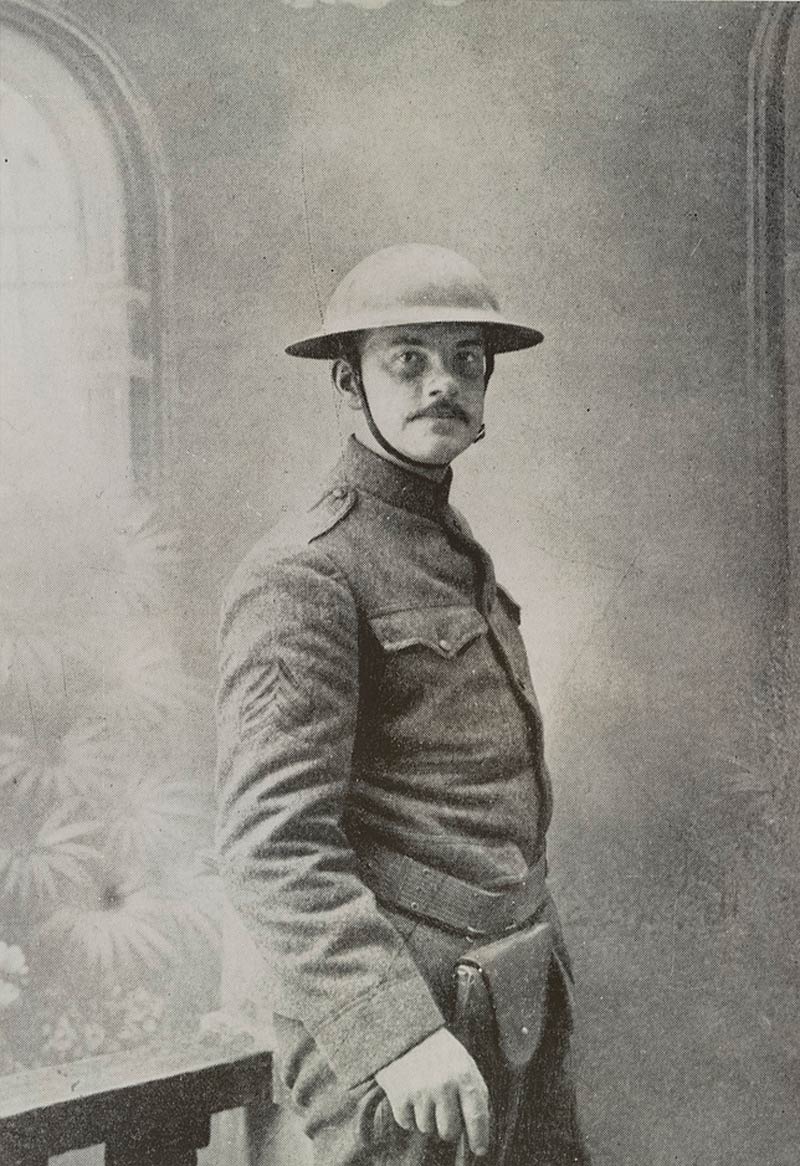
Sgt. Joyce Kilmer quit the Times to serve in France. Image via: U.S. Library of Congress
The death of Sergeant Joyce Kilmer, killed in action on July 30, 1918, shocked the nation. A beloved poet and writer, Kilmer enlisted in the Sixty-Ninth Regiment New York National Guard, later moving to Headquarters Company, 165th Infantry, Seventy-Seventh Division. Before the war, he and his wife, poet Aline Murray, resided at 134 Wadsworth Avenue in Washington Heights with their four young children. Kilmer worked at the New York Times on West Forty-Third Street. Kilmer had become a household name for his 1913 poem “Trees.”
In France, he was assigned to the intelligence section. A sniper cut him down in no-man’s land at the Ourcq River. He was thirty-one. Kilmer is interred with his fellow soldiers in Oise-Aisne American Cemetery.
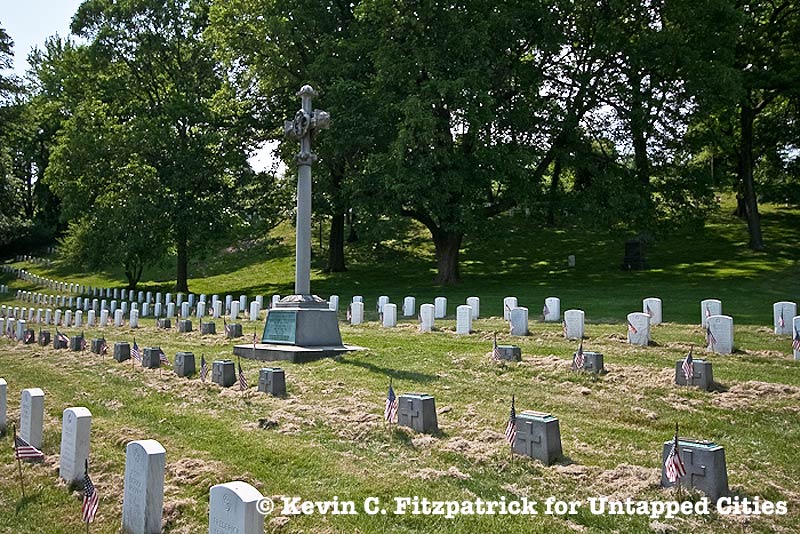
The French gravestones look different from U.S. graves at Cypress Hills National Cemetery in Brooklyn
The large Latin cross in Cypress Hills National Cemetery in Brooklyn honors twenty-five French sailors who died in New York. This 12-foot granite cross was erected in memory to sailors of the Republic of France Navy. As with so many American deaths at the time, the influenza pandemic accounted for all but one of their deaths, which all happened between Oct 3-24, 1918. Each has a gray granite headstone with a bronze plaque on top; they are markedly different from U.S. gravestones.
The four ships on the memorials are the Gloire, an armored cruiser, the cruisers Marseillaise and Montcalm, and Armement Militaire des Bâtiments de Commerce, an armed merchant ship. The France-American Society erected the monument in 1920.
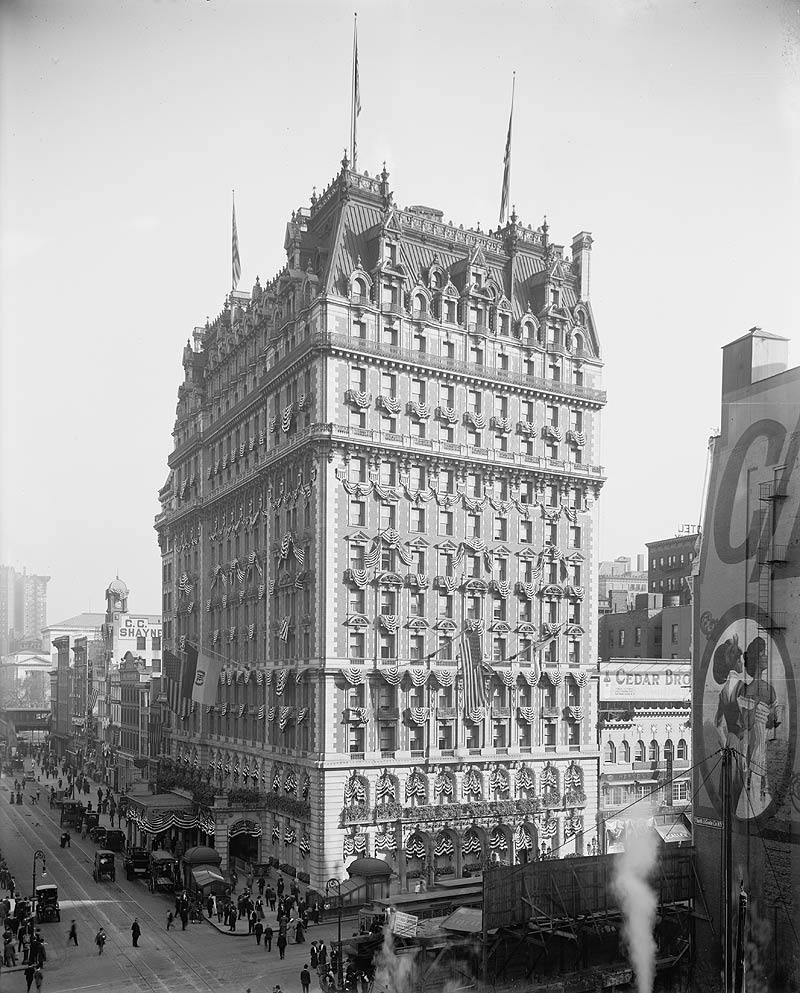
The Knickerbocker Hotel has returned to use as hotel in Times Square. Photo from Library of Congress
On November 7, 1918, it was erroneously reported the war had ended. The public went wild until the truth came out later that afternoon, and the date has become known as the False Armistice. At the time, Enrico Caruso, the most famous tenor in the country, was living in the Knickerbocker Hotel on Forty-Second Street and Broadway. Caruso spontaneously stepped out onto the Knickerbocker’s second floor terrace and performed “The Star-Spangled Banner” for the happy revelers in Times Square cheering the end of the war.
The day the Armistice was actually signed, November 11, was opening night at the opera house. Caruso appeared onstage as scheduled, and the audience went mad. So he gave the crowd a bonus: During the intermissions, the curtain went up and the cast performed all the patriotic songs of the Allies. Millionaire real estate scion John Jacob Astor IV built the lavish fifteen-story luxury Hotel Knickerbocker in 1906. It was a victim of the Depression and was converted to an office building in 1920, forcing Caruso to move out. After a multimillion-dollar renovation, the Knickerbocker resumed life as a luxury hotel in 2015.
Get the book World War I New York: A Guide to the City’s Enduring Ties to the Great War
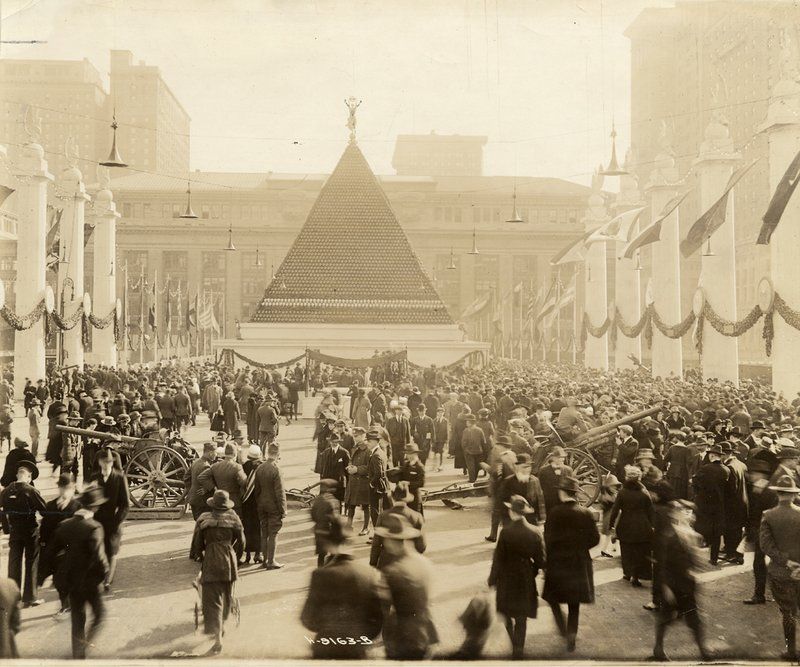
A pyramid of 85,000 German army helmets from WWI. Photo via Smithsonian Institution, in public domain.
In 1919, Park Avenue was the home of two enormous pyramids made of German army helmets. 85,000 German army helmets, to be exact. After the Allies won the First World War, American soldiers captured the helmets in a supply depot in Europe and brought them back to the States. Then the American government displayed them outside Grand Central Terminal to convince New Yorkers flush with pride to buy war bonds. German helmets were also awarded as prizes to government workers who successfully sold the bonds.
A typed label on the back of this photograph reads: “View of the employees of the New York Central / Railroad, assembled in Victory Way, showing the pyramid of captured / German helmets, with Grand Central Terminal in / the background.”
Kevin C. Fitzpatrick is the author World War I New York: A Guide to the City’s Enduring Ties to the Great War (Globe Pequot Press). He has written and edited seven books tied to New York City history. He is also a licensed sightseeing guide, and a member of the World War I Centennial Committee for New York City and The Lambs. Visit FitzpatrickAuthor.com.
Next, also check out Five NYC Avenues, Five Wards 1776 to 1965.
Subscribe to our newsletter